Comparing welding goggles to welding helmet is a bit like comparing apples to oranges.
They are not meant for the same types of work. In a nutshell, welding goggles offer higher visibility, while a welding helmet offers much more protection.
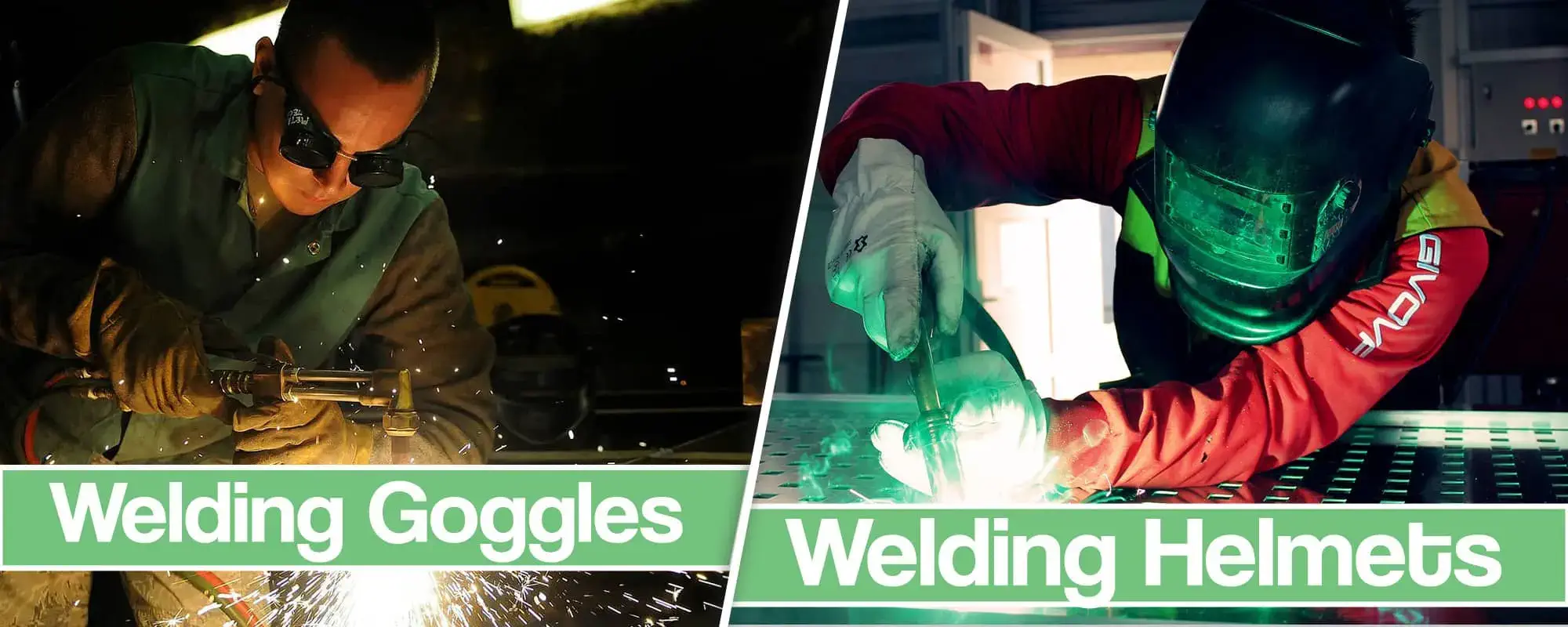
But there is much more to be said if you want to understand exactly why this is the case. So let’s get started with a crucial point.
Welding Goggles
Welding goggles are meant for gas welding most of the time. Not for arc welding.
Welding goggles and welding glasses are similar but they don’t offer full face, neck and head protection against the invisible portion of UV radiation. That’s the kicker.
If you use welding goggles to arc weld, even if you use a proper shade, you will expose your face and neck to harmful intense light and easily develop skin cancer.
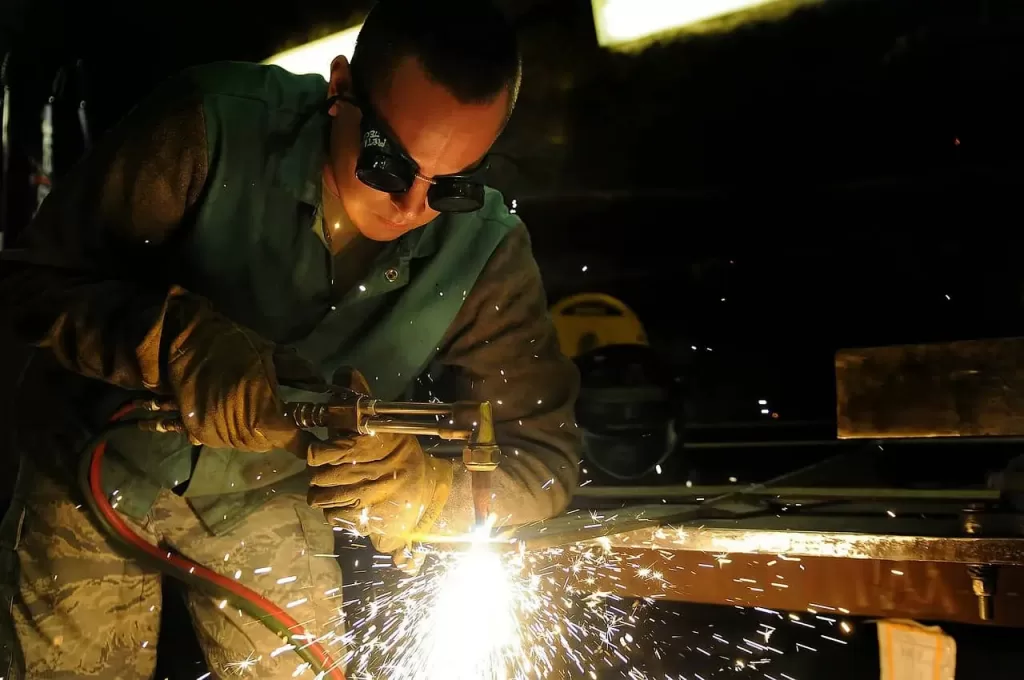
Don’t do this. Even if you do it once or twice, you will get strong sunburns. Welding goggles are much lighter than a welding helmet on the other hand. They also provide a better field of view, which is why you might want to use them but they can only be used safely for gas welding.
UV and IR radiation
When you do any kind of welding and especially arc welding, you will expose yourself to two types of UV and IR radiation. The visible and invisible radiation. The invisible portions of UV and IR are your biggest concerns. Especially the non-visible part of UV radiation. This one causes blindness, sunburn and skin cancer.
This means that if you weld and protect your eyes or any other part of the body with a protective material that only blocks the visible part of UV light, you will still be exposed to the invisible UV radiation and get skin cancer.
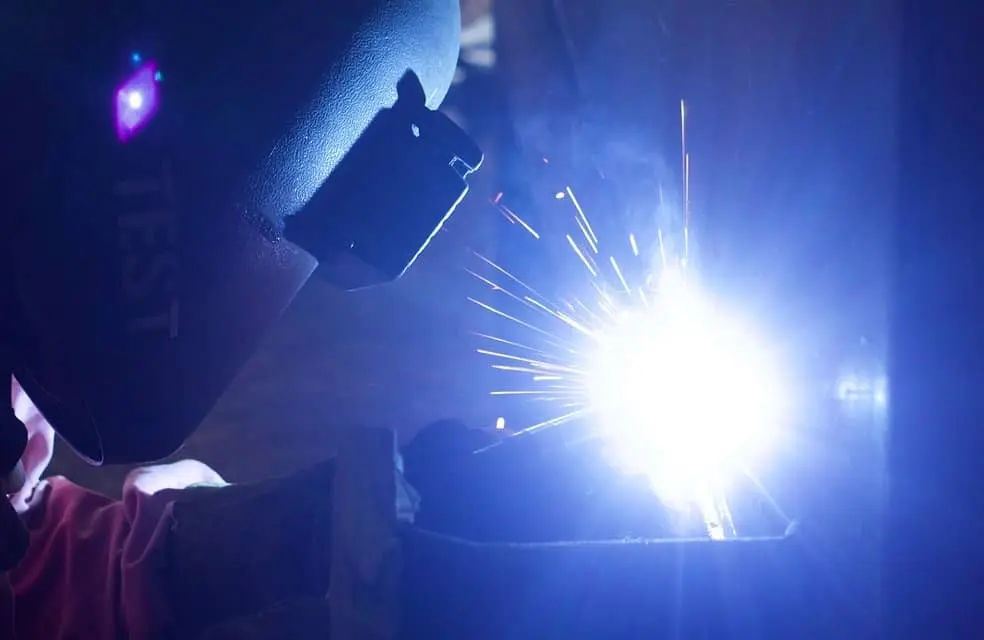
So, you must protect against the invisible portion of the radiation as well. Now that we understood this concept let’s see that welding goggles and welding helmets comparison.
Protection level the welding goggles provide
Opting for welding goggles will protect your eyes from invisible and visible radiation but not the face or other exposed skin areas.
However, this is only true if clearly stated by the manufacturer. Some welding goggles may not be rated for UV radiation caused by the welding arc.
The rest of your face will be exposed to radiation and welding sparks, flying debris, etc.
That is why welding goggles are simply inferior to welding helmets for any kind of arc welding.
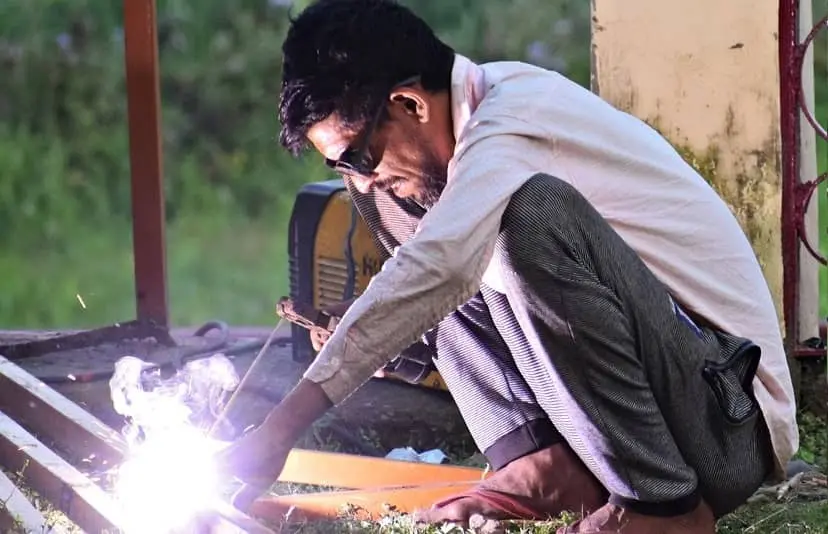
Visibility level
Using the welding goggles will provide you with a way wider field of view and clearer visibility of your arc. This is truly a blessing for oxy welding, and it’s a shame we can’t use them for arc welding.
Depending on the shade level you choose for the goggles, your visibility may be hindered but this is also true for welding helmets.
Welding Helmet
A welding helmet is a way more specialized piece of protective equipment that simply offers better protection but with less visibility and more weight.
Welding helmets provide adequate protection against intense UV rays originating from the welding arc. They are both your eye protection and the surrounding skin protection.
Intense UV light can’t penetrate the welding helmet’s shell, which protects your skin and the UV light is easily stopped by the welding helmet’s lens.
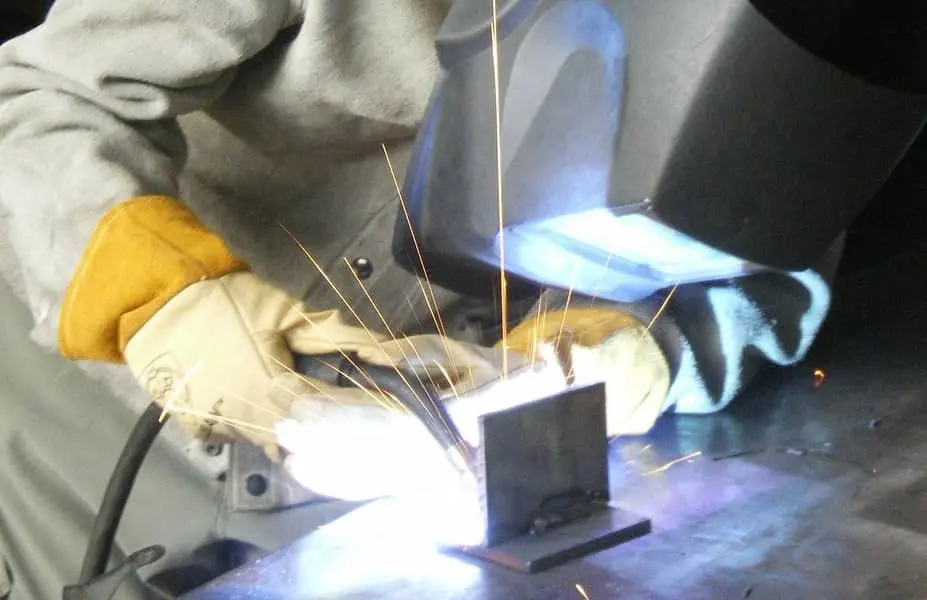
Unfortunately, welding helmets are bulky, heavy and provide less visibility than welding goggles.
Protection level the welding helmets provide
Intense light produced by the welding arc can cause flash burn on the entire face but also lead to the painful condition called photokeratitis. This condition is something like a sunburn of your eye. Auto darkening features provided by welding helmets are way better at preventing this from taking place.
It may seem counterintuitive but the fact of the matter is that an auto darkening feature on a helmet will provide better optimal protection against welding flash than a fixed shade passive welding hood.
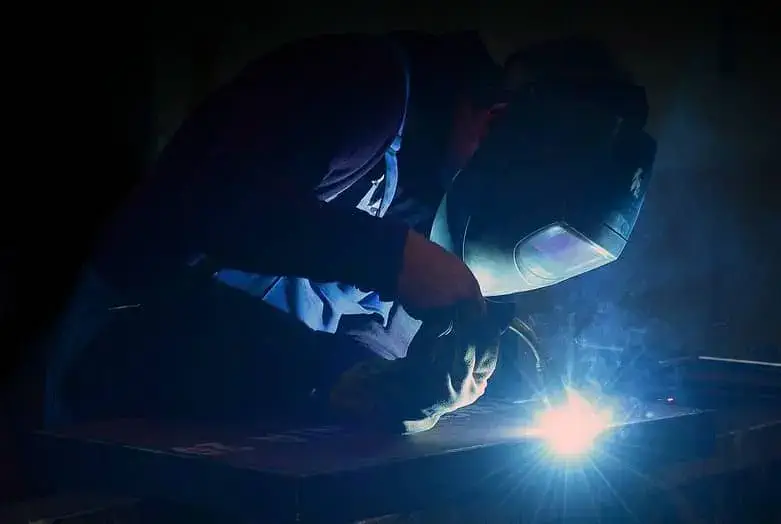
People can forget to put their hood on when they constantly need to lift it up and down and this is why professionals prefer auto darkening features. A helmet’s shell provides protection against weld spatter, sparks when grinding metals, molten debris flying around, etc. You get the picture. A welding helmet is much safer than welding goggles for arc welding.
Limited visibility
While there are helmets with auto darkening properties on the market with bigger view areas, it is still not as good as if you were looking through the welding goggles.
Unfortunately, this is an area where we have to compromise a little and prioritize safety. You should definitely only start welding if you feel comfortable with the view area you have for the given job because poor visibility can lead to poor welds or reduced safety.
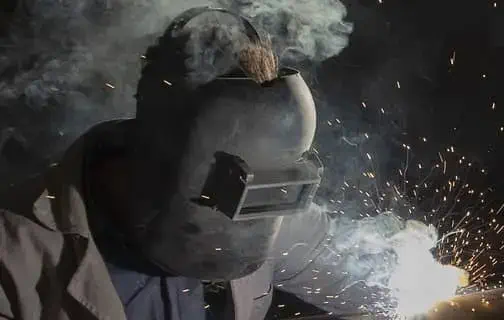
There are helmets in the professional range that provide excellent view screen sizes like Optrel, ESAB and 3M but they are more expensive.
How to choose between the two?
Ultimately you have to choose safety over convenience. While the welding goggles provide minimum protection they can’t be used for electric arc work because you will expose yourself to the intense UV light.
A welding helmet will give you skin and eye protection. For any real welding work, you will need to use proper safety gear and unless you are doing oxy welding, you are unlikely to get away without consequences if you use welding goggles alone.
For light work, you could use welding goggles but you have to understand that they provide less protection and you might experience skin burns. They are way better than welding with a naked eye (never do this if you value your eyesight) but at the same time, they are simply not enough to protect a welder from high heat, intense light, flying sparks and etc.
Conclusion
Welders must keep their eyes safe but also prevent IR light, UV light, flying debris and sparks from reaching their skin. The face shield from a welding helmet is providing protection with a compromise in visibility but not in safety and safety is much more important.
Even if they don’t have optimal visibility, newer helmets that automatically darken their lens will keep your eyes protected and keep you from having to wear glasses. And if you are willing to spend a few bucks more, you can get a welding helmet with a wide view area and enjoy better protection without any compromises.




